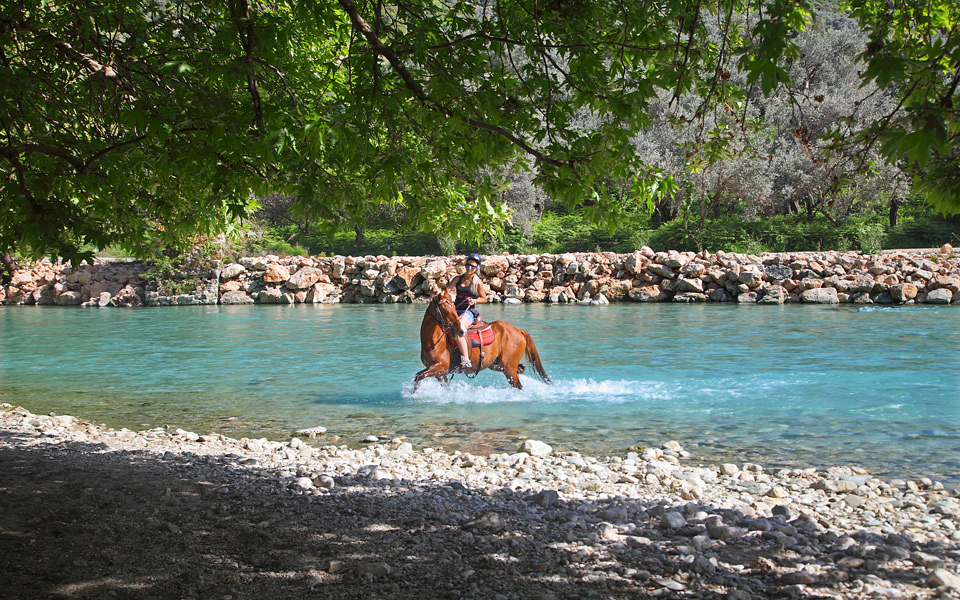A bucket filled with water from the river is passed around in the boat that sails on the Acheron. All the passengers dip their hands in. “Wash yourselves and you will become immortal. This is the water of the Styx,” the boatman, Giorgos Bitzios, tells them convincingly. “The souls of the dead once traveled these waters to reach the other world,” he continues. “Today it is navigable for 3 kilometers. Odysseus took the same route when he descended into Hades to seek the advice of the blind prophet Tiresias.”
Locals identify the Acheron Narrows as the Gateway to Hades, where Hermes led the souls of the recently deceased, although written sources place the entrance in the Acherusian Lake. There, the ferryman of Hades, Charon, would be waiting to take them across to the Underworld. His payment was a coin that had been placed in the mouth or on the lips of the deceased when they were buried.
Where does myth end and reality begin? In one sense, it doesn’t really matter. For here, on the border of Thesprotia and Preveza, you can experience a fascinating autumn weekend, swimming in the still warm waters of the Ionian Sea, hiking in lush green nature, driving into the mountains of Souli, rafting and horse riding in scenic surroundings.
“Locals identify the Acheron Narrows as the Gateway to Hades, where Hermes led the souls of the recently deceased, although written sources place the entrance in the Acherusian Lake. ”
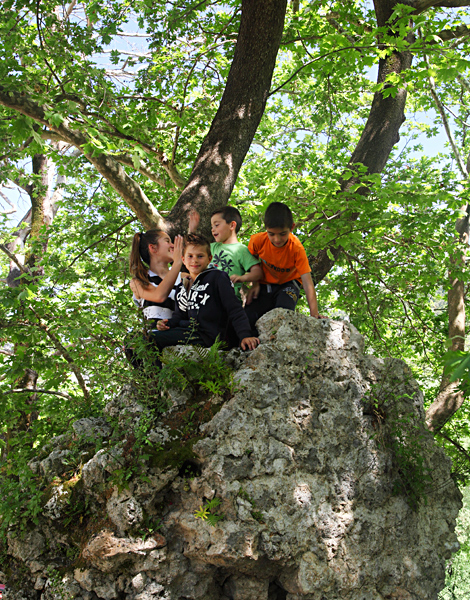
© Olga Charami
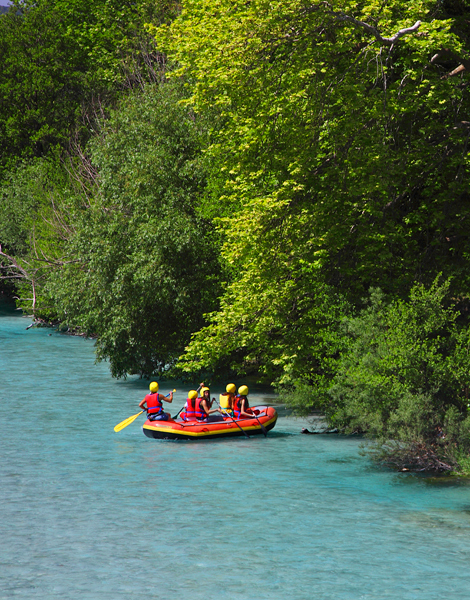
© Olga Charami
“In addition to some amazing walks, you can also enjoy horse riding, archery, flying fox, mountain biking and canoeing.”
Rendezvous in the Underworld
The river flows for 64 kilometers before flowing into the Ionian Sea after forming not only its delta but also the wetlands of Valanidorachi and Splantza. In the background, the imposing Souli mountains; below them the plain where the Acherusian Lake once was, before being drained in the 1960s. This was the confluence of the Acheron, the river of woe, the Kokytos, the river of lamentation, and the Pyriphlegethon, the “flaming” river, three of the five rivers of Hades. It was also the location of the Elysian Fields, where the celebrated necromanteion (“oracle of the dead”) was founded.
The village of Glyki is a good base for exploring the region. Nearby, in the spacious recreational area on the banks of the river, you will find an entire community with tents, caravans, canteens, peddlers and a wide choice of leisure activities. The village itself has developed in similar fashion.
Just a few steps from the recreational area is one of the main springs of the Acheron. The water rises from the ground and in the small cave, according to another legend, lived a dragon that polluted the river. Saint Donatus killed the dragon and since then the water has been fresh, hence the name Glyki (lit. “sweet” or – for water – fresh). The Acheron is indeed one of the cleanest rivers in Greece and at this point, because of the springs, the water is icy cold. You can see for yourself by engaging in your activity of choice. Rafting on this stretch of the river has a zero degree of difficulty and the trip lasts 15 minutes. In addition to some amazing walks, you can also enjoy horse riding, archery, flying fox, mountain biking and canoeing.
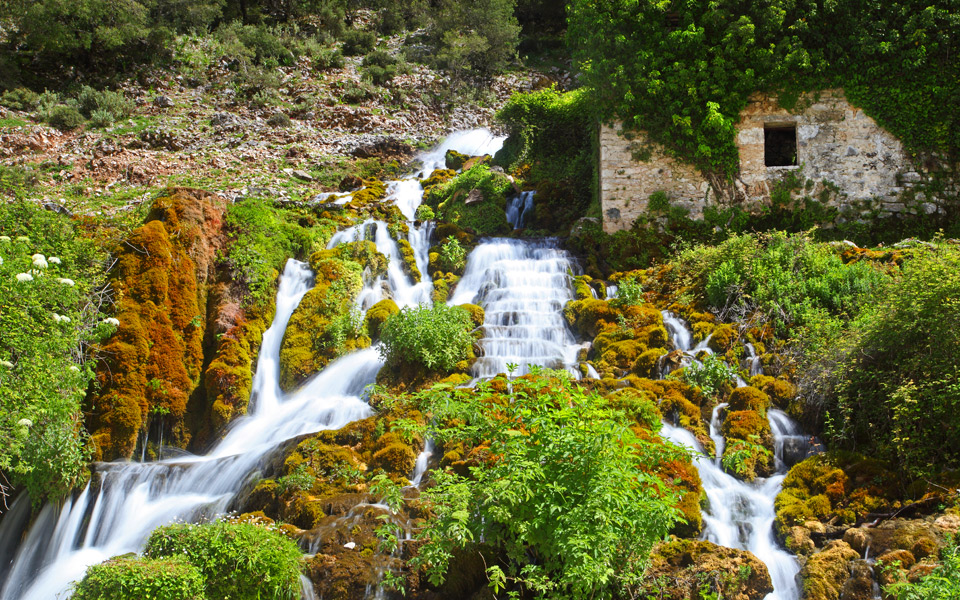
© Olga Charami
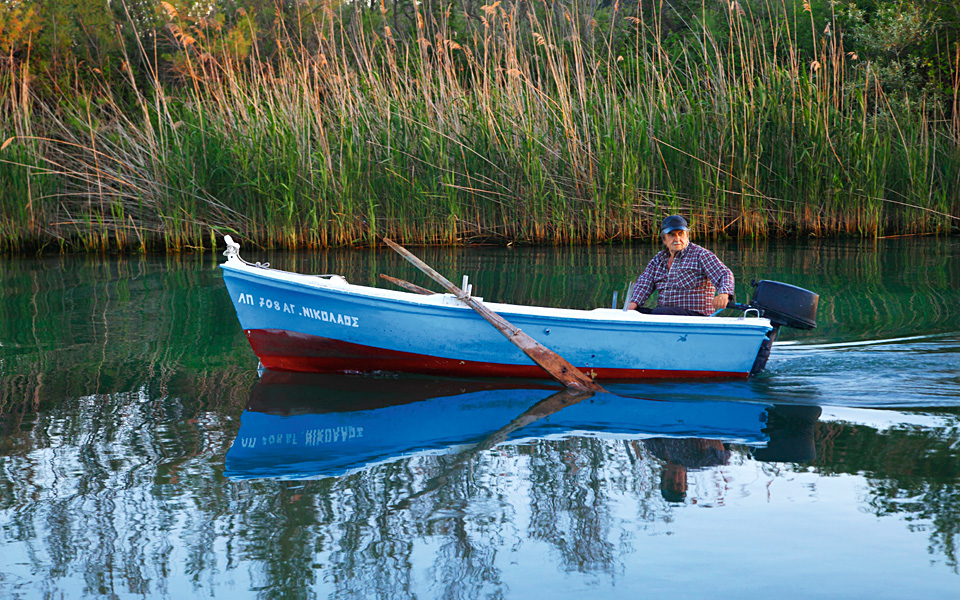
© Olga Charami
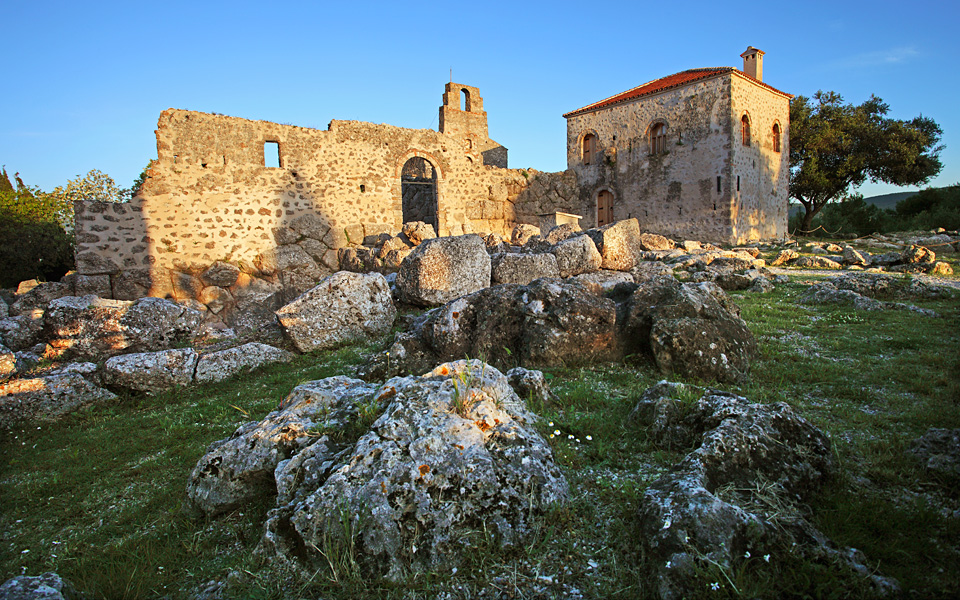
© Olga Charami
Rites and rituals
“If you stay long enough in the underground chamber of the necromanteion, it is said you will feel dizzy and can’t hear properly,” says Spyros Raptis, the guard and guide at the archaeological site of the necromanteion at the village of Mesopotamos. The chamber carved in the rock with 15 stone arches is very impressive. This is where pilgrims would, theoretically, communicate with loved ones who had passed away.
The sanctuary of the gods of the Underworld was built in the late 4th century BC. It operated for two centuries but ceased to function after the Roman conquest. In the early 18th century, the convent of Saint John the Forerunner was built over its ruins. Pilgrims were initiated through a series of elaborate rites, rituals, even ordeals. They were given broad beans to eat, but also lupines and psychotropic plants that caused sickness and hallucinations.
After leaving the sanctuary with these thoughts in mind, you will soon be in the beautiful village of Ammoudia, with its eucalyptus-lined sandy beach, picturesque river harbor and renowned tavernas, where everything is full of life. But when the sun goes down, the ancient myths and legends appear to move in closer, as you become more aware of the fact that the local people still hold strongly to their traditions, customs and certain superstitions. They still christen their children with the names of ancient and mythical figures. And they still believe that the river grants immortality; even if Captain Giorgos did wear a wry smile as he filled the bucket with its water…
“Pilgrims were initiated through a series of elaborate rites, rituals, even ordeals. They were given broad beans to eat, but also lupines and psychotropic plants that caused sickness and hallucinations.”

